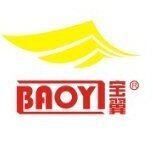-
Welcome to Auto Parts Forum
Whether you are a veteran automotive parts guru or just someone looking for some quick auto parts advice, register today and start a new topic in our forum. Registration is free and you can even sign up with social network platforms such as Facebook, X, and LinkedIn.
Automakers Admit Need for Federal Right to Repair Solution
-
Similar Topics
-
By WiperTech008
2009 Cadillac DTS Wiring Harness - Anyone Know the Part # or Compatible Alternatives?
-
By Counterman
March 31, 2025, marked a milestone in engine oil development—the first license date for the
link hidden, please login to view. While that might sound like just another specification in a long line of upgrades, for professional parts counter pros selling to independent repair shops, it’s a moment that carries real-world impact. Understanding what’s new—and how to help shop owners explain it to their customers—could be the difference between a routine oil sale and a value-driven recommendation. First, What Is GF-7?
GF-7 builds on the progress of the GF-6 specification introduced in 2020. Like its predecessor, GF-7 is split into two categories: GF-7A for most modern gasoline engines and GF-7B for low-viscosity formulations like 0W-16, commonly used in vehicles from Japanese OEMs like Toyota. The key takeaway? GF-7 oils are fully backward compatible. If a customer’s vehicle previously called for GF-6, GF-5, or even GF-4, a GF-7A product can safely be used. For 0W-16 applications, GF-7B covers those needs—just make sure the shop isn’t using a 0W-16 oil in an engine not designed for it.
“When they developed the GF categories almost 30-plus years ago, the idea was that it’s an evergreen category, so they’re all backward compatible,” Dr. Michael Warholic, global technology director,
link hidden, please login to view. “The caveat is that GF-7B category. Some engines don’t like thin oil because they’re just not made to operate that way. You have to be careful about misapplication. “The OEMs identified that and developed a shield icon with 0W-16 label to make it easy to identify it versus 0W-20 or heavier oil,” he said.
How to Identify GF-7 on the Shelf
Paying attention to the API designation and symbols on the bottle is key. Counter pros should be looking for the API “donut” and the Starburst or Shield symbols:
• The Starburst still signals general GF-category oils (GF-7A).
• A Shield symbol identifies 0W-16 oils under the GF-7B track.
• Look for API donut to know it’s GF-7.
“It boils down to: if you see the Starburst, it’s a qualified GF oil. If you see the donut on the back, it has the API credentials on it,” Warholic explained.
There’s a one-year transition period where GF-6 oils will still be in circulation, but by March 2026, GF-7 will be the standard.
“Model Year 2026 is when we expect the OEMs will start to notice GF-7 oils in the owner’s manual,” added Karl Kocher, director of light duty product strategy, Valvoline.
Why Should Your Shop Customers Care?
Not all oils are created equal, and consumers are becoming more selective. GF-7 brings improvements in durability, fuel economy, wear protection and emissions performance. This includes:
• Deposit control: GF-7 increases limits on piston cleanliness to limit deposits, helping prevent buildup that can lead to costly repairs like ring sticking.
• Wear resistance: Chain wear limits are tighter to protect timing systems and avoid check-engine lights.
• Cold start protection: Improved low-temp viscosity performance means oil flows better when the engine is most vulnerable—at startup.
• LSPI protection over time: GF-7 includes a new test for aged oil’s ability to resist Low-Speed Pre-Ignition, protecting direct-injected turbo engines long after the oil change.
• Ash limit: For the first time, GF-7 introduces an ash cap to help reduce emissions—a nod to the increasing regulatory pressure on internal combustion engines.
Selling the Upgrade
In addition to standard GF-7 products, some oil suppliers are offering “above and beyond” formulations. Valvoline’s Restore & Protect, for example, is a fully synthetic motor oil that aims at both older, high-mileage vehicles (restore) and new vehicles (protect). While the oil sports a proprietary formulation, Valvoline has noted two proprietary technologies–Active Clean, which removes deposits, and Liqui-Shield, which prevents deposit formation.
“The active technology behind the Restore and Protect products is the same in our GF-6 and our GF-7 products,” Warholic confirmed. “For GF-7, it’s built on a slightly different platform to meet the requirements. The Restore and Protect technology is above and beyond even the deposit performance required for GF-7. It exceeds that performance and does something that no other oil does or that’s actually required by GF-7. It is our own proprietary technology.”
That’s especially valuable in older engines that were exposed to less advanced oils under earlier standards like GF-4 or GF-5. With Restore and Protect, your shop customers can offer a tiered service—a standard GF-7 oil for maintenance, or R&P for vehicles showing signs of engine wear or for customers wanting the best protection available.
Bottom Line for Counter Pros
• Understand the labeling: Starburst = GF-7A; Shield = GF-7B; look for API SQ on the donut.
• Ask about the vehicle: Year, model, and what oil is currently being used.
• Explain backward compatibility: GF-7 oils replace earlier categories in most cases.
• Be proactive: As model year 2026 approaches, shops will need help identifying the right oils—GF-7A or GF-7B—and transitioning their inventory.
GF-7 isn’t just a new acronym—it’s the new baseline. The counter pros who get ahead of it now will be the ones their shop customers rely on tomorrow.
The post
link hidden, please login to view appeared first on link hidden, please login to view.
link hidden, please login to view -
By Counterman
The Auto Care Association, MEMA Aftermarket Suppliers, CAR Coalition, CVSN, PAMA and NFIB support the “Right to Equitable and Professional Auto Industry Repair” (REPAIR) Act 2025.
Senators Ben Ray Luján (D-NM) and Josh Hawley (R-MO) introduced this bipartisan, bicameral bill.
The bill ensures that consumers can repair their vehicles freely, safely and affordably.
The Impact of Automaker Restrictions
As vehicles modernize, automakers block independent repair shops and aftermarket suppliers.
They impose arbitrary restrictions on who can access repair data. This forces Americans into exclusive, more expensive repair networks.
As a result, American drivers face higher repair bills with fewer repair choices. Independent repair shops, parts manufacturers, and aftermarket service providers struggle with automaker restrictions. These barriers complicate routine repairs and maintenance. A recent survey shows that 84% of independent repair shops view data access as a top issue.
Support from Industry Leaders for the REPAIR Act 2025
“The
link hidden, please login to view applauds Senators Luján and Hawley for introducing the commonsense, bipartisan REPAIR Act 2025,” said Bill Hanvey, president and CEO, Auto Care Association. “Thanks to their leadership, federal right to repair protections gain ground in both chambers of Congress. We commit to protecting nearly 300 million drivers and 900,000 technicians who depend on the $500 billion auto care industry. We’ll work together to turn the commonsense REPAIR Act 2025 into law.” Promoting Consumer Choice and Freedom
“Americans deserve a car repair market that promotes choice and protects access to affordable and safe repairs,” said Justin Rzepka, executive director of the CAR Coalition. “As the right to repair movement strengthens, we’re thrilled to have the leadership of Sens. Luján and Hawley. The REPAIR Act 2025’s introduction in the Senate is a huge milestone. This bill brings us closer to empowering consumers with the freedom to choose safe and cost-effective solutions.”
Protecting the Aftermarket Industry
“We thank Senators Luján and Hawley for introducing this important, bipartisan legislation to protect vehicle owners,” said Paul McCarthy, president,
link hidden, please login to view. “The REPAIR Act ensures aftermarket suppliers can continue to deliver innovation, parts, and tools for safe, affordable vehicle repair. This bill protects consumer choice, maintains a level playing field, and strengthens businesses and jobs in our vital industry.” Strengthening Supply Chains and Competition
“CVSN thanks Senators Luján and Hawley for protecting America’s supply chains by keeping trucks and fleets on the road,” said Kristen Kellogg, senior director, government affairs, CVSN. “Giving drivers the freedom to choose where they repair their vehicles strengthens competition. It supports a resilient supply chain and ensures fair access to repair.
This legislation is a win for consumers, independent repairers, and businesses across the U.S.”
NFIB’s Support for Competitive Auto Repair
“NFIB applauds Senators Luján and Hawley for leading the Senate on this important bipartisan bill,” said Andrea McGee, principal, federal government relations, NFIB. “The REPAIR Act maintains competition in the automotive industry. Almost 90% of NFIB members voted in support of right to repair, making it one of their top priorities. NFIB thanks Senators Luján and Hawley for their dedication to this issue.”
PAMA’s Call for Consumer Protection
“PAMA commends Senators Luján and Hawley for taking this important step to cement consumer choice,” said Justin Cialella, government affairs committee director for the Preventative Automotive Maintenance Association. “This legislation comes at a critical juncture. Automakers continue to impose barriers that restrict our ability to repair vehicles.”
Public Support for Right to Repair Legislation
Independent repair shops and other members urge Congress to pass automotive right to repair legislation. Consumers agree – 75% of American drivers support right to repair solutions like the REPAIR Act 2025.
House Reintroduction and Growing Support
This milestone follows the bill’s recent reintroduction in the House of Representatives.
Reps. Neal Dunn (R-FL-02) and Marie Gluesenkamp Perez (D-WA-03) lead the effort with more than 20 bipartisan cosponsors.
Call to Action for the REPAIR Act 2025
Join us in calling on Congress to advance the REPAIR Act 2025 today at link hidden, please login to view.
The post
link hidden, please login to view appeared first on link hidden, please login to view.
link hidden, please login to view -
-
By Counterman
The automotive aftermarket should be pleased to hear that the REPAIR Act has now secured its first Presidential endorsement. Theodore Roosevelt, 26th president of the United States, has officially backed H.R. 1566. The endorsement comes on the heels of a face-to-face meeting between Roosevelt and the leadership team at the Aftermarket Auto Parts Alliance Inc.
“We immediately found a common ground,” proclaimed Roosevelt during the post-meeting press conference. “As I have said before, all I ask is a square deal for every American! We must provide motorists with a fair chance. They should be able to choose the garage and mechanic of their choice to repair their automobiles.”
“The Alliance has been a leader in this advocacy effort,” noted JC Washbish, president and CEO of the Alliance. “We have been successful in the past when it comes to garnering support for the Right to Repair but to win this fight we needed to punch above our weight class. We know we need to carry a bigger stick. That is why we approached the President.”
link hidden, please login to view a staunch advocate for the Right to Repair, explained to Roosevelt that at its core, the right to repair issue is a square deal, “we simply told the Colonel that every motorist should have the choice for affordable and convenient automotive repair.” Washbish also cautioned President Roosevelt that the fight for the Right to Repair still needs to be communicated and pushed through the Halls of Congress and that is why the Alliance sought the leadership of the famous Rough Rider.
Roosevelt pledged his commitment, saying, “It is the ideal cause for me to lead. The aftermarket is devoted to it, and this cause is one for which I am inspired to reclaim the bully pulpit. The Right to Repair is so fundamentally American! It is as native to this land as the bison on the prairie!”
While the meeting between the
link hidden, please login to view and Roosevelt took place on April 1 (April Fools’ Day), 2025, Washbish noted the Right to Repair is no joke. “The industry must support the link hidden, please login to view. We must become our own champions. My fellow Americans,” Washbish urged, “join me in the arena and spend yourselves in this worthy cause!” The post
link hidden, please login to view appeared first on link hidden, please login to view.
link hidden, please login to view
-




Recommended Posts
Join the conversation
You can post now and register later. If you have an account, sign in now to post with your account.
Note: Your post will require moderator approval before it will be visible.